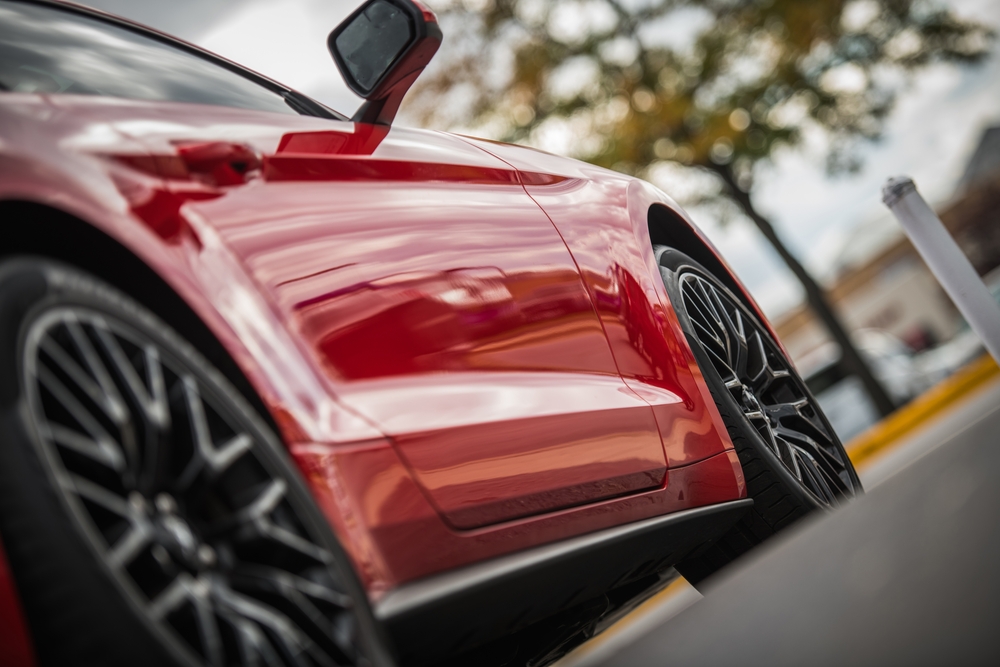Any proud petrolhead will tell you that their car’s power output is often the talk at car meets and car shows. But with measurements of PS, bhp and kW, what does it mean?
Car imports from abroad will often demonstrate several engine power output figures to market to various global buyers. International markets are a great money maker for retailers and dealers after all.
Within the UK, horsepower (PS) and brake horsepower (bhp) is typically used to indicate engine output. You’ll hear most car lovers recalling every horsepower figure on every car they’ve ever owned. And we’re also guilty of that too. For our mainland European counterparts, and for cars sold and marketed in the EU, the standard measurement is shown in kilowatts (kW). But at first glance, it might not give the same buzz as a bhp figure.
CAVEAT: It is worth knowing that any changes you make to increase horsepower will void your cars’ warranty. This article is intended for entertainment purposes and does not constitute advice of any kind. Any figures given are rough estimates and may not reflect costs for your car. Do your own research and consult an expert before doing anything.
What is Horsepower?
Other than being one of the most important factors for sports and performance car lovers, horsepower is a measurement used to understand the amount of power a car yields. Determined through numerous methods, such as observing sheer engine power or assessing power at the flywheel, horsepower will normally allude to the acceleration speed and amount of torque on offer too.
Why is it Called Horsepower?
Historically speaking, the term horsepower was developed as a comparison tool that explained the power of the steam engine versus the known power of a horse. In the 1700s, James Watts needed to measure how much power a steam engine produced. As horses were used to pull heavy objects and transport people on longer journeys, horses became the test subject for measurement creation.
In reality, a horse can only ever achieve up to 15 horsepower, and humans are capable of just over 1hp, which is nothing compared to the Rimac Nevera (1,914ps).
What is PS?
For thoroughbred petrolheads and enthusiasts, the PS figures normally set their pulse racing or cause heated debates at car meets. The horsepower (PS) measurement is taken from the power produced by the engine. It’s on brand for enthusiasts to exclaim the sheer strength produced by their V12 engine and V8 engines.
PS vs BHP
Horsepower (PS) and brake horsepower (bhp) are different measurements for a car’s power output. PS stands for PferdStarke, which translates to horsepower, and is a metric horsepower calculation. Most people brag about their car’s PS figures as this relates to the power harvested within the engine. As the figure is often marginally higher, it definitely looks more appealing to car owners.
The brake horsepower is calculated slightly differently, as it measures the car’s horsepower via the flywheel. It takes into consideration the engine power left over after things like the gearbox have been used. This typically sees bhp rounded up as the conversion takes the power measurement into decimal figures, for example, 156.9bhp will be registered as 157bhp.
Although there’s only a minuscule difference in the numbers, most car enthusiasts will boast their PS over their bhp, especially when 300hp sounds better than 295bhp.
What is kW in engine power?
Almost all car imports will show this figure alongside its PS and bhp counterpart, and it can sometimes be shown first. Kilowatts (kW) is another way to measure power using the metric system. For those unfamiliar with horsepower figures in kW it can cause a double-take, especially since the figures appear lower than other measurements.
Almost all car brands market their cars with engine horsepower figures in both a metric and kilowatt format simply because they sell cars all over the world where different measurement systems are used.
For the EU and the majority of Europe, car manufacturers show a car’s horsepower in kW as it is the EU’s standard of measurement.
For those unfamiliar with kW and its conversion, it can appear to look as though the power output is lower. However, this is not the case. A car registered with 150kW worth of horsepower simply translates to 203ps; it’s just the conversion that makes the figure look low.
When importing a car to the UK, especially one that has been modified, it’s important to share the power output with your insurance company. Specialist insurers will be able to support you by providing a policy that covers you.
What is the Conversion for PS, bhp and kW?
Between the PS and bhp figures there is a very small margin; the calculation of one PS is approximately 98.6% of a BHP. When converting the two, it’s clear that there’s only ever a small differentiation between them. In comparison with kW, this engine output is shown as it is a standard measurement used within the EU.
| PS | bhp | kW |
| 1 | 0.986 | 0.735 |
| 150 | 147.94 | 110.32 |
| 300 | 295.896 | 220.65 |
| 450 | 443.84 | 330.97 |

Why Does Horsepower Matter When Purchasing a Car?
Petrolheads and car enthusiasts aside, horsepower can be a helpful indicator for someone looking to buy a new or used car. Whether it is documented as PS, bhp or kW, the figure you see will also indicate the power of the car, whilst also alluding to the amount of torque you might receive. Essentially, torque is a measurement of force needed in order to turn the wheels and propel the car up steep inclines or whilst carrying heavy loads.
For those needing a car that offers greater functionality, they’ll seek a car with a more-than-average horsepower figure, especially if they intend to transport multiple passengers frequently or need decent momentum to pull a trailer. This makes vehicles like the VW GTI (241ps/179kW) and the Kia Sorento (199ps/148kW) ideal.
Otherwise, horsepower is seen as a golden number for petrolheads and enthusiasts. If your car boasts anything over 600bhp, it’s often followed by moments of adoration and excitement. The horsepower figure simply alludes to the sheer power stored beneath the bonnet, which, more than often, does set the pulse racing.
Increased horsepower can affect your car insurance too. At Keith Michaels, we cover supercars, performance cars and modified cars that often have a higher engine output, ensuring peace of mind for drivers and owners.
What Can Affect the PS, bhp and kW of an Engine?
During the manufacturing stage, the horsepower of an engine can be affected by an additional motor being fitted to the car. For plug-in hybrid, self-charging and mild-hybrid vehicles, a small percentage of horsepower is gained from the motor. Cars built with an engine and electric motor will have a combined horsepower figure.
There is added thrill for those who modify their cars too as supercharger and turbocharger systems can be equipped. Upgrading using a turbocharger in conjunction with the exhaust setup can lead to 70-150 additional horsepower, whilst a supercharging connected to the engine intake can offer an extra 50-100 horsepower.
Does Horsepower Affect Insurance?
The higher your horsepower, the more likely you’ll pay more on your insurance. For modified and performance cars, many insurers will avoid handing a policy over to you as the risk is too high. That’s why you need a specialist insurer, like Keith Michaels, who can support you with finding insurance that offers peace of mind and security.
With over 30 years of experience working with specialist insurance, we’re eager and enthusiastic to hear about your car, its horsepower and the requirements you need from your insurance. We take the time to understand your worries and concerns by carefully matching you with an accurate policy that covers your needs. Learn more about performance car insurance.


